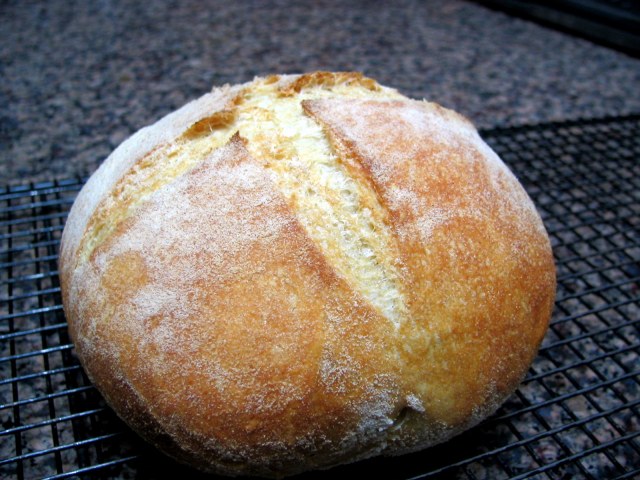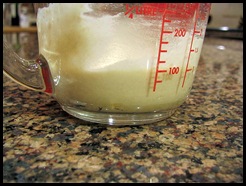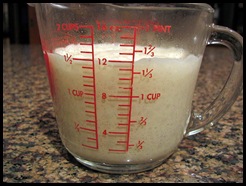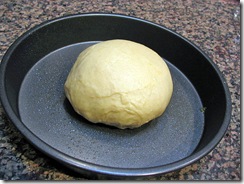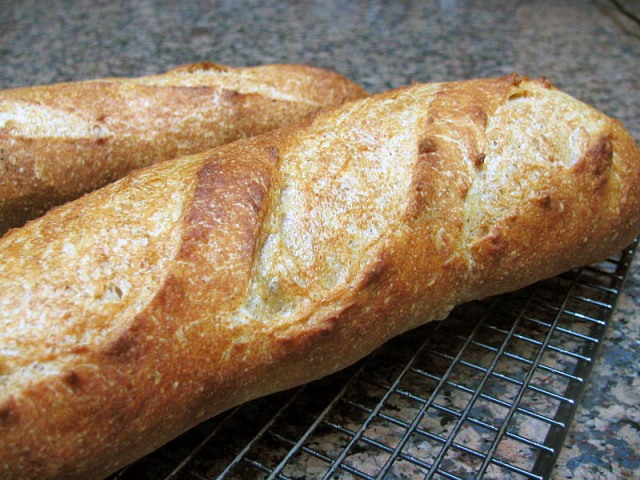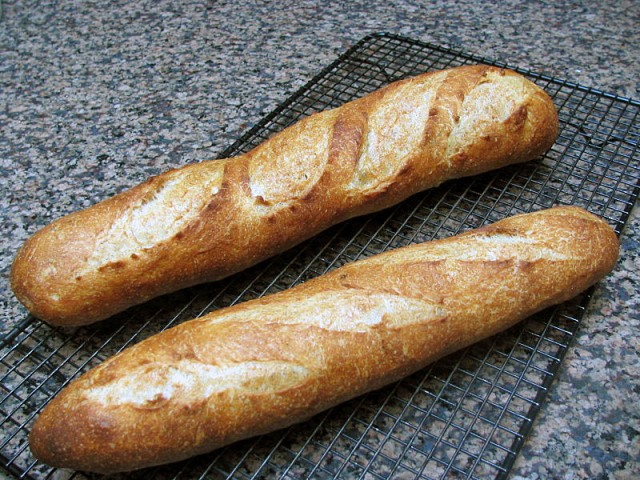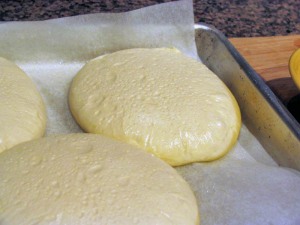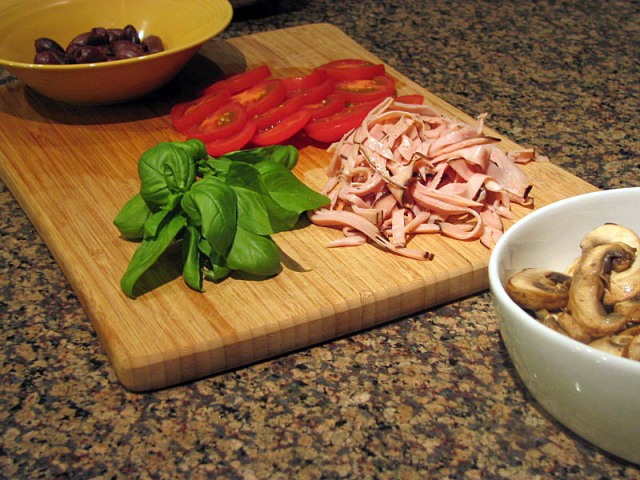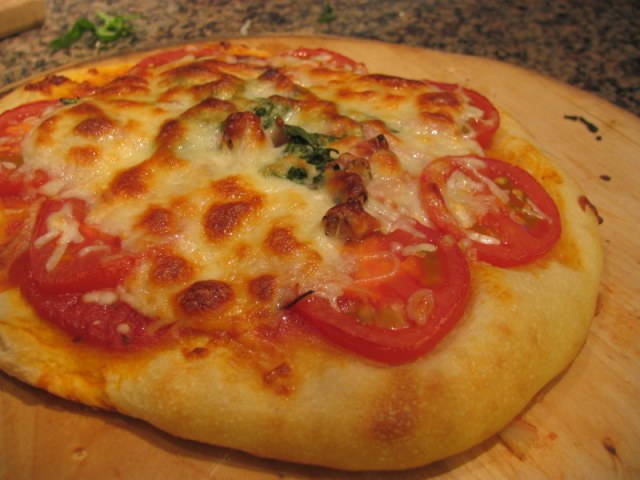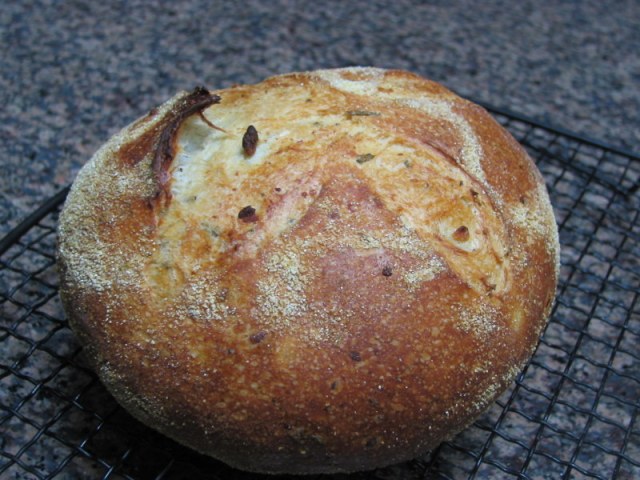
One more bread following along with the “Bread Baker’s Apprentice Challenge“, the group project in which bakers make every single recipe from Peter Reinhart’s book, in the order they are published.
Potato Rosemary bread: I was looking forward to this one. Homemade bread has plenty of wonderful qualities, but often tastes best on the day it is baked, because contrary to its commercial counterparts, it has no preservatives. However, something quite interesting happens once you add potato, or even potato cooking water to bread dough: the potato starch molecules “trap” water, and as a result, the bread stays fresh longer. It will not lose moisture as fast as a regular bread.
Peter Reinhart’s recipe calls for a biga – a stiff mixture of flour, water, and yeast that ferments overnight – as part of the dough, that also contains a small amount of commercial yeast, flour, mashed potatoes, chopped rosemary, black pepper, and salt. Instead of kneading I folded the dough at 20, 60, and 90 minutes. After two hours I formed a “boule”, and allowed it to rise 2 more hours. My other modification was to bake it with steam, that is, I baked it for 30 minutes covered with a roasting pan, then removed the cover, and allowed it to bake for ten more minutes. The internal temperature of the bread was a little higher than 200F at that point.
Here are some photos of the process…
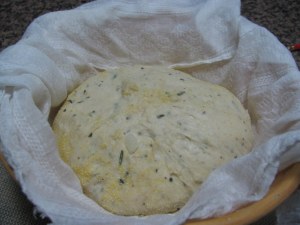
Slashing for this kind of bread is optional, but I like to practice my skills with the baker’s blade… 😉

Large, uneven holes, a vision that makes me very happy…
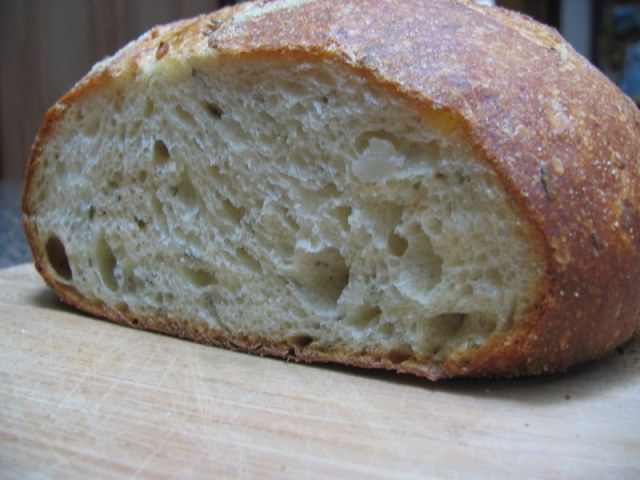
Time for lunch! Everyone is invited…

Some of my fellow bakers already made this bread, please visit their sites following the links:
Paul loved this bread, particularly how wonderful it made his home smell during baking (the same happened in our home)
TxFarmer, as usual, does a great job shaping her bread in unique ways, I love to visit her blog, even if my Chinese skills are not up to par to read the text. Maybe one day… 😉

